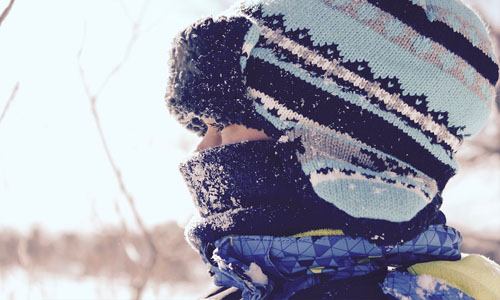Finding the Right Base Layer for Different Activities
Author

Mike has a real passion for cycling, hiking and just generally being outdoors. Being from Warrington, he is only a few hours away from North Wales, The Peak District, Yorkshire and the Lake District. He has climbed Mount Kilimanjaro and done a lot of the mountains in the Lake District. His new passion is walking his dog and enjoying a pint at the end.
Anyone who has ever worn a base layer knows that highly comforting toasty feeling. They give us the comfort we need when exterior conditions are challenging. They are life savers when we are on a trail in freezing temperatures or under a blanket in a tent. Therefore, it becomes important that we choose the right base layer.
Two major considerations can be made while selecting a base layer — weight and material.

On the basis of weight, three major categories of base layers are mentioned below for you to choose the right one depending on the activity and weather:
Lightweight Base Layers
Referred to as the Next to Skin Base Layer (NTS), this is the first layer that you wear. It has excellent moisture wicking properties. This mostly worker for skier who only needs a lightweight base layer under the ski pants.
Mid-Weight Base Layers
Closely associated to next to the skin base layers, these are a bit thicker than NTS. This type of base layer works best in colder weather conditions.
Heavyweight Base Layers
These are for weather conditions where you can have frostbite. You can easily wear it alone or over a light or mid-weight base layer to create a nice and warm protective layering.

Talking about the types of material used in making base layers, we have listed the fabrics that are prominently used all over the world:
Merino Wool
This is an improved and much smarter alternative to wool base layers. This type of wool is taken from a breed of sheep that can survive in both extremely hot and cold conditions. The sheep is found in the Southern Alps of New Zealand.
- The wool has excellent heat retaining properties
- Contains small pockets that allow more breathability
- Absorbs the amount of moisture equivalent to 30% of its weight before becoming completely wet
- Extremely soft hollow fibres have moisture wicking properties that pull the moisture from the skin
- Naturally anti-bacterial property makes it resistant to odours
- Sustainable composition that is easily renewable
Synthetic
Materials containing synthetic elements include fleece, spandex, and polyester. Although they aren’t the highest quality fabrics, but are effective enough to get the job done at a much more affordable price.
- Polyester is extremely durable as it can resist mildew and chemicals
- Spandex is exceptionally stretchy and can be stretched by more than 500% before tearing
- Polyester dries quickly due to its naturally hydrophobic properties
- Moisture wicking qualities in polyester pull the moisture from the skin through the hollow fibres
- Spandex is more retractive than rubber which makes it resistant to unwanted stretching
- Any of the material won’t shrink
- Fleece is exceptionally warm and soft but won’t be suitable for aerobic activities as it not as breathable as other materials
With such wide range of base layers available in the market, it is unlikely that you would face any difficulty getting through the rough and challenging environments while hiking, skiing or climbing. It is just a matter of choice that you will have to make to find which type of base layer serves you best.
Author

Mike has a real passion for cycling, hiking and just generally being outdoors. Being from Warrington, he is only a few hours away from North Wales, The Peak District, Yorkshire and the Lake District. He has climbed Mount Kilimanjaro and done a lot of the mountains in the Lake District. His new passion is walking his dog and enjoying a pint at the end.
Categories
- Sport (28)
- Product Reviews (3)
- Team Outdoor Look (7)
- Mike Wild (2)
- Mike Payton (2)
- Suse Hammond-Pears (3)
- Snowboarding (12)
- Latest Offers (105)
- Shop Talk (1)
- Competitions (7)
- Walking (413)
- Lifestyle Fashion (8)
- Travel (86)
- Kit Guides (176)
- Workwear Clothing (6)
- Safety Workwear (4)
- Health/Fitness (289)
- Skiing (91)
- Great Outdoors (1316)
- Cycling (92)
- January 2025
- December 2024
- November 2024
- October 2024
- September 2024
- August 2024
- July 2024
- June 2024
- May 2024
- April 2024
- March 2024
- February 2024
- January 2024
- December 2023
- November 2023
- October 2023
- September 2023
- August 2023
- July 2023
- June 2023
- May 2023
- April 2023
- March 2023
- February 2023
- January 2023
- December 2022
- November 2022
- October 2022
- September 2022
- August 2022
- July 2022
- June 2022
- May 2022
- April 2022
- March 2022
- February 2022
- January 2022
- December 2021
- November 2021
- October 2021
- September 2021
- August 2021
- July 2021
- June 2021
- May 2021
- April 2021
- March 2021
- February 2021
- January 2021
- December 2020
- November 2020
- October 2020
- September 2020
- August 2020
- July 2020
- June 2020
- May 2020
- April 2020
- March 2020
- February 2020
- January 2020
- December 2019
- November 2019
- October 2019
- September 2019
- August 2019
- July 2019
- June 2019
- May 2019
- April 2019
- March 2019
- February 2019
- January 2019
- December 2018
- November 2018
- October 2018
- September 2018
- August 2018
- July 2018
- June 2018
- May 2018
- April 2018
- March 2018
- February 2018
- January 2018
- December 2017
- November 2017
- October 2017
- September 2017
- August 2017
- July 2017
- June 2017
- May 2017
- April 2017
- March 2017
- February 2017
- January 2017
- December 2016
- November 2016
- October 2016
- September 2016
- August 2016
- July 2016
- June 2016
- May 2016
- April 2016
- March 2016
- February 2016
- January 2016
- December 2015
- November 2015
- October 2015
- September 2015
- August 2015
- July 2015
- June 2015
- May 2015
- April 2015
- March 2015
- February 2015
- January 2015
- December 2014
- November 2014
- October 2014
- September 2014
- August 2014
- July 2014
- June 2014
- May 2014
- April 2014
- March 2014
- February 2014
- January 2014
- December 2013
- November 2013
- October 2013
- September 2013
- August 2013
- July 2013
- June 2013
- May 2013
- April 2013
- March 2013
- February 2013
- January 2013
- December 2012
- November 2012
- October 2012
- September 2012
- August 2012
- July 2012
- June 2012
- May 2012
- April 2012
- March 2012
- February 2012
- January 2012
- December 2011
- November 2011
- October 2011
- September 2011
- August 2011
- May 2010
- April 2010
- March 2010
- February 2010
- January 2010
- November 2009
- October 2009
- September 2009
Submit a Comment